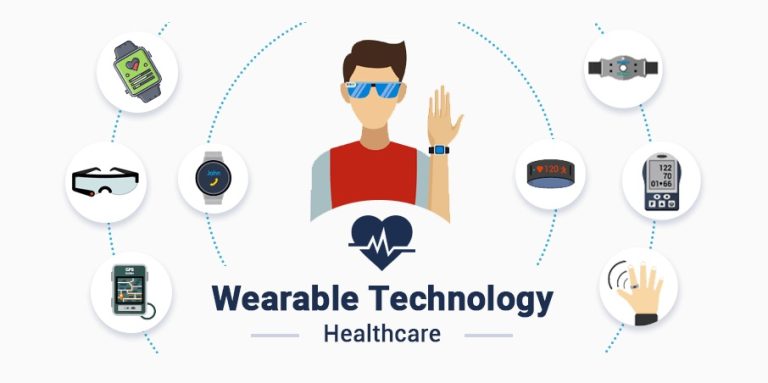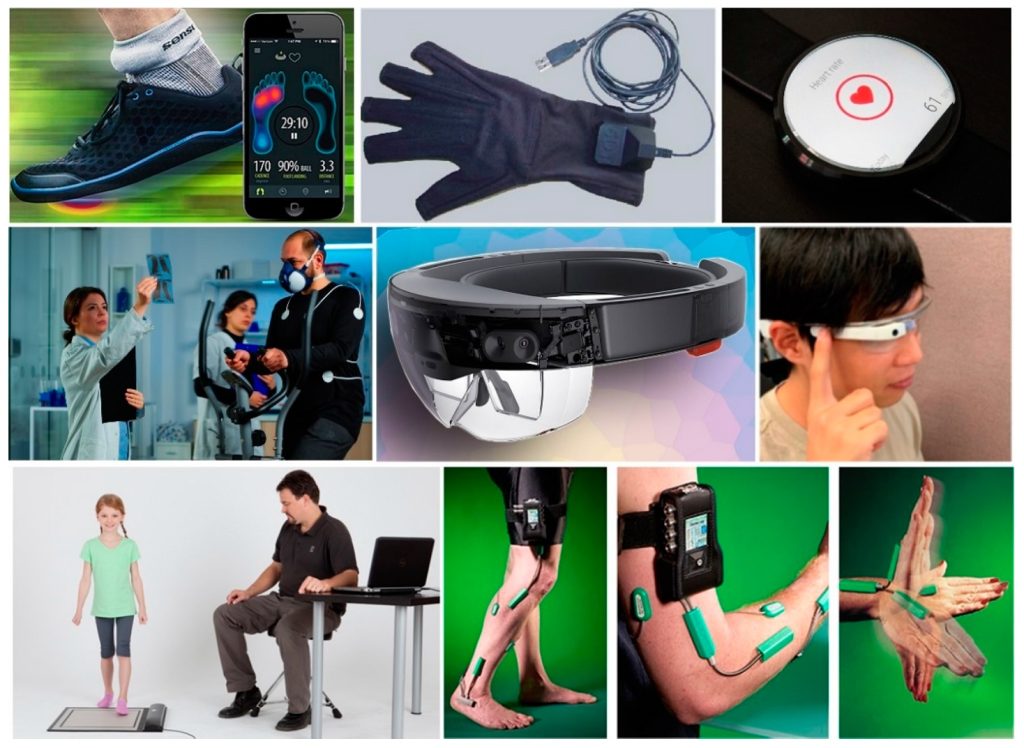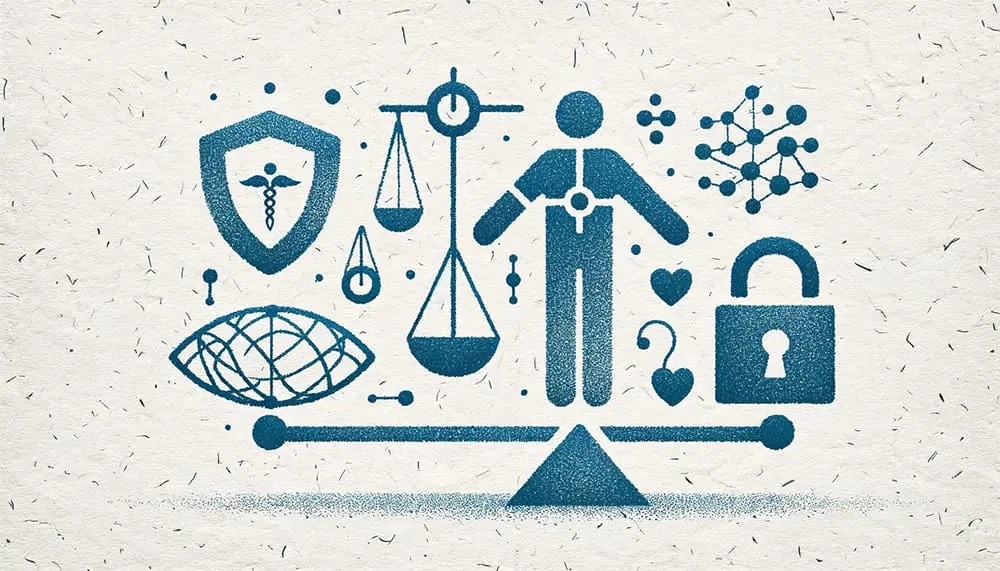Introduction
It’s 7:00 a.m. in 2025, and your smartwatch has already done more for your health than most checkups used to. It monitored your sleep patterns, checked your heart rate, and even detected irregularities your doctor would want to know about. Welcome to the era of wearable health technology, where your watch, patch, or even a smart ring could be the reason you catch a health issue before it turns serious.
In just a few years, wearable medical devices have evolved from step counters to sophisticated health guardians. Whether it’s a wearable ECG monitor that flags potential heart problems or a wearable glucose monitor that keeps diabetes in check, these innovations are no longer just about fitness – they’re saving lives every day.
This article dives into how smart health wearables are redefining healthcare in 2025, the growing medical wearables market, and what this means for patients, doctors, and the future of medicine.
Section 2: The evolution of wearable health technology
When wearable devices first hit the market, their main goal was to make fitness tracking fun. Remember those early step counters and chunky smartwatches that mostly told you how lazy you were being on a Sunday? Those were the humble beginnings of what would soon become a multi-billion-dollar wearable health technology industry.
Fast-forward to 2025, and the transformation is nothing short of breathtaking. Devices that once counted steps now perform real-time medical diagnostics. The technology inside your smartwatches for health can detect atrial fibrillation, measure blood oxygen saturation, and even monitor stress through heart rate variability. Meanwhile, sleek wearable ECG monitors can continuously track your heart’s electrical activity, sending data directly to your physician’s dashboard.
The driving force behind this evolution has been a mix of AI-powered analytics, sensor miniaturization, and cloud-based data sharing. Together, these innovations allow continuous, non-invasive health tracking – something that was nearly impossible just a decade ago.
The wearable medical devices of 2025 don’t just collect data; they interpret it. They identify trends, issue alerts, and integrate with healthcare systems for remote patient monitoring. It’s no exaggeration to say that these gadgets have transformed from fitness accessories into digital lifesavers.
![]()
Section 3: How wearable health trackers are saving lives in 2025
The phrase “life-saving technology” used to sound like something reserved for hospitals and emergency rooms. But in 2025, that title belongs just as much to the tiny device on your wrist. Wearable health trackers are no longer just health companions – they’ve become early-warning systems that prevent serious medical crises every single day.
1. Detecting heart problems before they strike
Modern wearable ECG monitors are capable of continuously scanning for irregular heart rhythms, such as atrial fibrillation (AFib). When these devices detect an anomaly, they alert the user – and sometimes even notify healthcare professionals. Countless stories now exist of people being rushed to the hospital after their watch warned them of a potential cardiac event – and walking out days later, alive because of it.
2. Managing diabetes smarter than ever
The wearable glucose monitor has been a game-changer for diabetics. Instead of finger pricks and manual readings, today’s smart sensors provide continuous glucose monitoring, displaying real-time data on smartphones and smartwatches. These devices even predict spikes or drops in blood sugar, helping patients take action before symptoms occur.
3. Supporting mental and emotional well-being
Smart health wearables now go beyond physical health. They track stress levels, sleep quality, and even mood indicators through biometrics like skin temperature and heart rate variability. Some models integrate breathing exercises or mindfulness prompts to help users regulate stress in the moment – like having a digital therapist strapped to your wrist.
4. Empowering remote patient monitoring
For patients with chronic conditions, remote patient monitoring devices have become a lifeline. Doctors can now keep an eye on vitals such as blood pressure, oxygen levels, and glucose from miles away, allowing faster interventions and fewer hospital visits. For elderly patients or those in rural areas, this can mean the difference between stable health and emergency hospitalization.
In short, wearable devices are reshaping healthcare from reactive to proactive. Instead of waiting for symptoms, doctors and patients can act on predictive insights – catching problems at the earliest possible stage.
Section 4: The booming medical wearables market
If you think wearable tech is just a passing trend, think again. The medical wearables market has exploded in recent years, and by 2025 it’s showing no signs of slowing down. With demand fueled by an aging population, chronic disease management, and a growing obsession with self-health tracking, the market is projected to exceed $60 billion globally by the end of the year.
Healthcare providers, insurance companies, and tech giants are all vying for a piece of this lucrative pie. What started as a niche for fitness enthusiasts is now a competitive battleground for innovation. Companies like Apple, Fitbit, Garmin, and newer med-tech startups are investing heavily in wearable medical devices that blur the line between consumer gadgets and clinical tools.
1. Rising trust and adoption
A few years ago, many people were skeptical about trusting a wristband with their health data. But as devices became more accurate and FDA-approved wearable ECG monitors and glucose sensors entered the mainstream, public confidence skyrocketed. Today, wearable data isn’t just for personal use – it’s part of professional medical diagnostics.
2. Integration with healthcare systems
Hospitals and clinics are increasingly integrating wearable data into electronic health records (EHRs). This allows for remote patient monitoring devices to seamlessly share updates with doctors, improving treatment plans and reducing readmissions.
3. The ripple effect across industries
Insurance companies are rewarding policyholders who use wearable health trackers, offering premium discounts for consistent health metrics. Employers are also joining in, launching wellness programs that use smart health wearables to track employee fitness and reduce healthcare costs.
As a result, wearable health technology isn’t just reshaping medicine – it’s redefining the economics of healthcare itself.
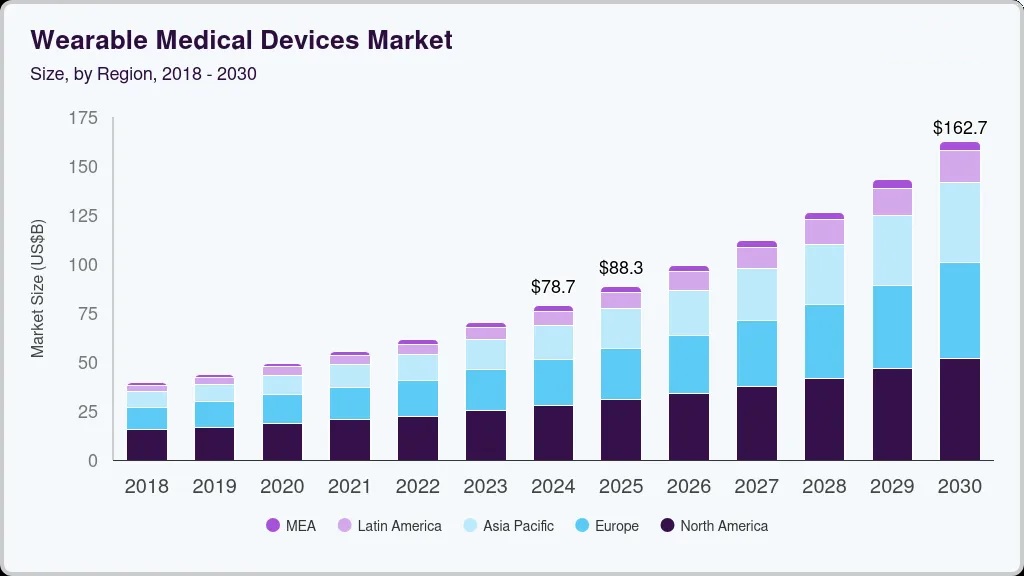
Section 5: Challenges and ethical concerns in wearable healthcare
While wearable health technology is transforming medicine for the better, it’s not without its complications. As these devices become more powerful and connected, new challenges have surfaced – from privacy concerns to data overload and even over-reliance on gadgets for medical advice.
1. Data privacy and security
One of the biggest concerns in the medical wearables market is how user data is stored and protected. These devices continuously collect sensitive health information – heart rate, glucose levels, sleep patterns, even stress indicators. If this data falls into the wrong hands, it could be used for insurance discrimination, targeted marketing, or identity theft.
To counter this, manufacturers are implementing stricter encryption standards and data-sharing transparency policies. But in 2025, cybersecurity remains one of the biggest threats to wearable healthcare.
2. Accuracy and over-dependence
While smart health wearables are incredibly advanced, they aren’t foolproof. False positives from wearable ECG monitors can cause unnecessary panic, while inaccurate glucose readings can mislead patients into making poor health decisions. The key message from experts: these devices should complement – not replace – medical judgment.
3. Accessibility and cost barriers
Although prices have dropped in recent years, not everyone can afford wearable medical devices or the subscription-based services they often require. High-end wearable glucose monitors and ECG systems remain out of reach for many, particularly in developing countries. This raises concerns about widening health inequality in the digital era.
4. Ethical use of AI-driven insights
AI now plays a central role in interpreting wearable health data. But who owns those insights? The patient, the device manufacturer, or the healthcare provider? Ethical frameworks are still catching up to the technology, and regulators are working to ensure fairness, accountability, and transparency.
Despite these challenges, the potential of wearable health trackers far outweighs the risks. With smarter policies, ethical data use, and improved education, the future looks bright for digital healthcare.
Section 6: The future of wearable health technology
If the last decade was about making wearables smarter, 2025 is about making them smarter than ever. The next phase of wearable health technology is defined by integration – devices that don’t just track health data, but also predict, prevent, and personalize healthcare on an entirely new level.
1. Predictive and preventive healthcare
The fusion of AI, machine learning, and biometric data is pushing healthcare into a predictive age. Imagine your wearable ECG monitor warning you about potential cardiac stress days before you feel any symptoms, or your wearable glucose monitor suggesting diet changes to prevent a sugar spike before it happens. These devices are becoming proactive partners in health, not just reactive tools.
2. Seamless body integration
Future wearable medical devices are expected to go beyond watches and patches. Developers are working on smart textiles – clothing embedded with health sensors that continuously track metrics like body temperature, hydration, and blood oxygen. There are even prototypes of skin-implantable chips that could transmit real-time vitals directly to your healthcare provider.
3. Enhanced remote patient care
As telemedicine becomes standard practice, remote patient monitoring devices will play a crucial role in hospital-at-home models. Instead of long hospital stays, patients will recover at home while doctors track their vitals in real time. This approach is improving patient comfort and reducing healthcare costs worldwide.
4. The AI-doctor partnership
In 2025 and beyond, smart health wearables won’t replace doctors – they’ll empower them. Physicians will have access to continuous streams of accurate data, helping them make faster, more informed decisions. Think of it as having a digital assistant that never sleeps and always watches over the patient.
The end goal? Personalized medicine for everyone, guided by data, powered by AI, and worn right on your wrist (or maybe your shirt).
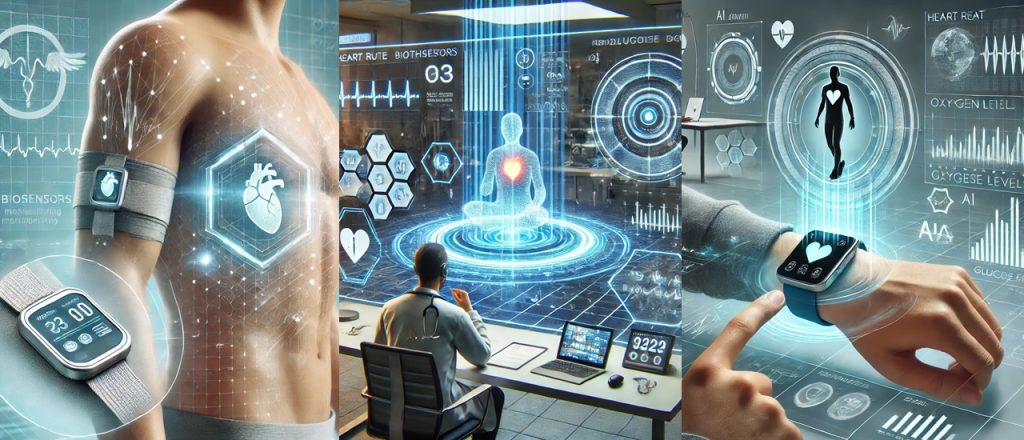
Section 7: Conclusion – A healthier future, one wearable at a time
In 2025, the line between healthcare and technology has never been thinner – or more empowering. From wearable ECG monitors that detect silent heart problems to wearable glucose monitors that save lives daily, these devices are changing how we understand and manage our health.
Wearable health trackers and smart health wearables have transformed medicine from a reactive system into a predictive one. The rise of wearable medical devices has created a world where early detection, remote care, and personal wellness all exist at your fingertips – literally.
Of course, challenges remain: data privacy, accessibility, and accuracy are ongoing battles. But one thing is clear – wearable health technology isn’t just a passing trend. It’s the foundation for a new era of healthcare, where every heartbeat, breath, and step tells a story your doctor can use to keep you healthier, longer.
In short, the future of healthcare isn’t arriving – it’s already on your wrist.
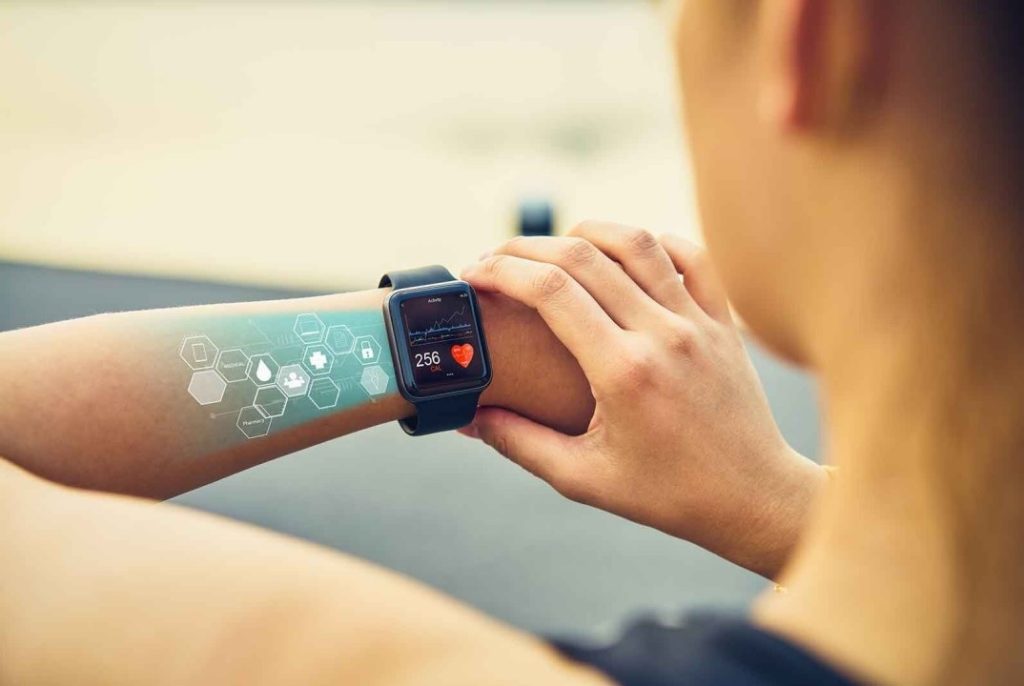
FAQs: Wearable health technology in 2025
- What are the main benefits of wearable health technology in 2025?
Wearable health devices allow continuous health monitoring, early detection of diseases, and real-time data sharing with doctors. They help manage chronic conditions and promote healthier lifestyles through personalized insights.
- How accurate are wearable ECG and glucose monitors today?
In 2025, most wearable ECG monitors and wearable glucose monitors are highly accurate, with FDA-cleared models rivaling traditional medical devices. However, they should still be used as complements to professional diagnosis, not replacements.
- Are wearable health trackers covered by insurance?
In many regions, yes. Insurance companies are increasingly offering incentives or coverage for smart health wearables that encourage preventive care or support chronic condition management.
- What are remote patient monitoring devices, and how do they help?
Remote patient monitoring devices collect and transmit patient data like heart rate, oxygen levels, and glucose in real time to healthcare professionals. They reduce hospital visits and allow faster responses to health changes.
- What’s next for the medical wearables market?
Expect explosive growth in the medical wearables market, driven by AI integration, smart clothing, and predictive analytics. Future devices will likely merge with telehealth platforms for complete digital care ecosystems.
- Are wearable medical devices safe to use every day?
Yes, most are designed for 24/7 use with biocompatible materials and low-energy sensors. However, users should follow manufacturer guidelines to prevent skin irritation or device fatigue.

